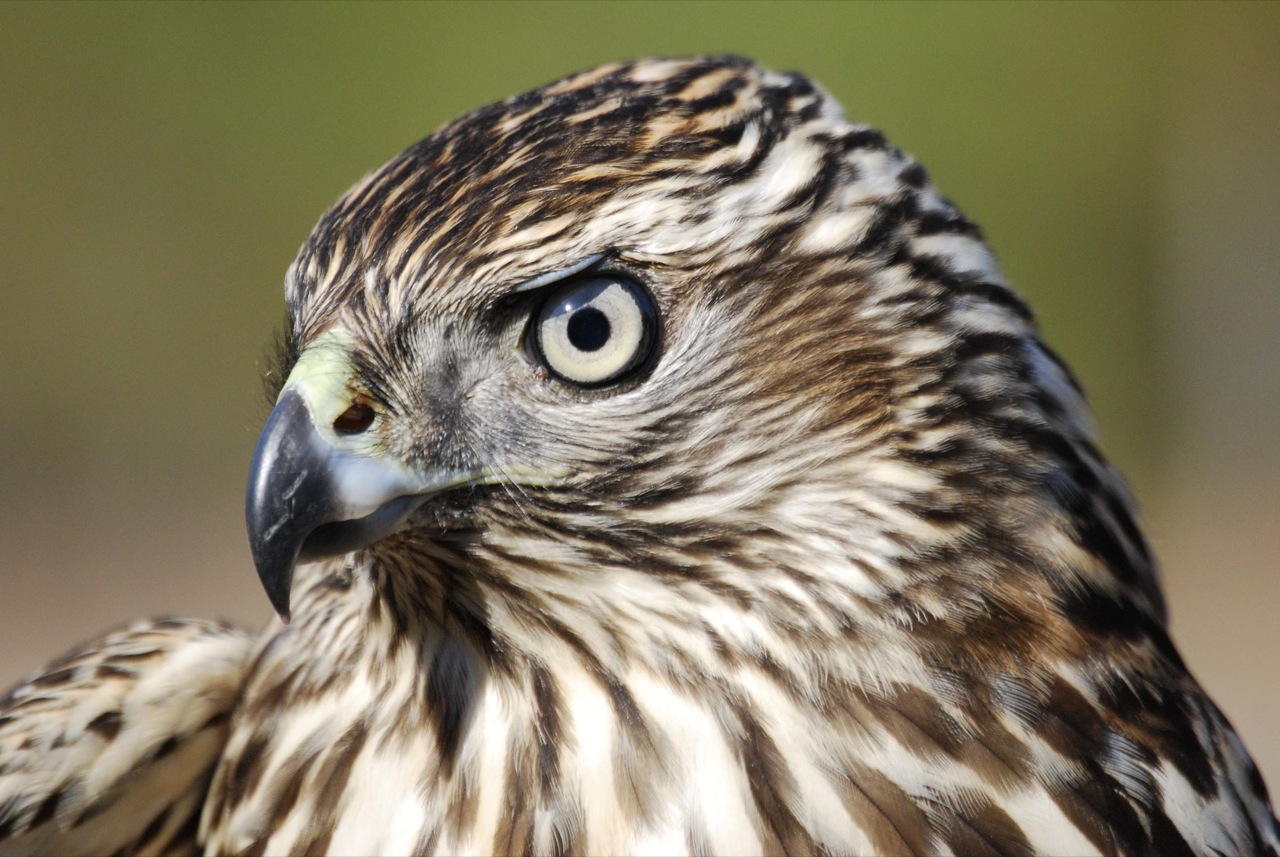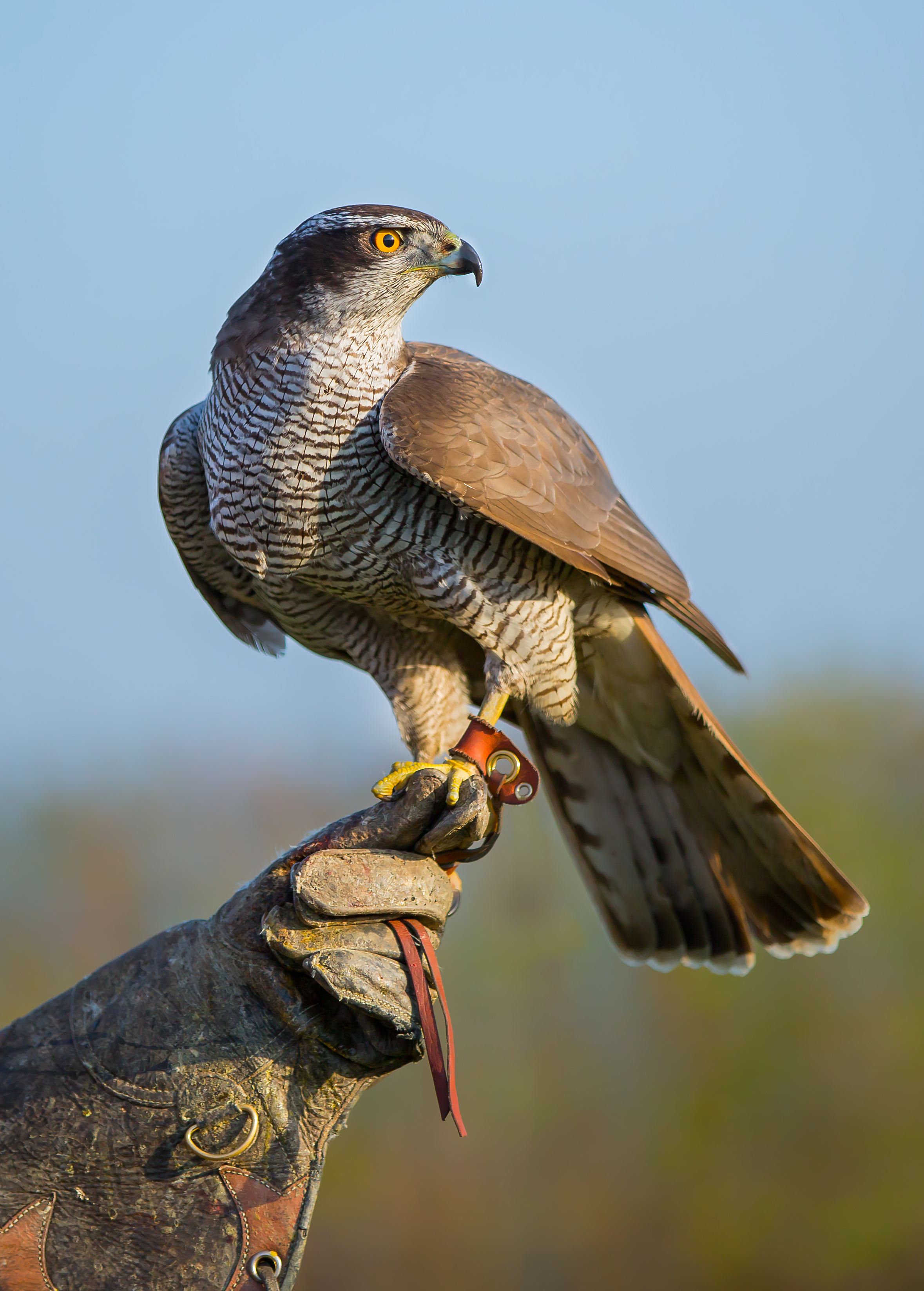Photo by Jeff B
Curt and Arlys Caslavka stopped at Goose Pond on Christmas Day, as they usually do, to see what birds were present. Their Christmas present that day was an excellent look at an adult northern goshawk that flew over their car along Kampen Road and our food plot north of the pond.
According to the eBird records, only one other person, Nick Walton, has found a goshawk at the sanctuary on January 12, 2001. Goshawks are also rare in Columbia County and the only other sighting in Columbia County by Aaron Stutz on January 19, 1998 at the Poynette MacKenzie Center.
What was the goshawk doing at Goose Pond? Maybe it was traveling though southern Wisconsin looking for forested habitat and decided to fly over the former Empire Prairie and by luck the Caslavkas were in the right place at the right time.
Goshawks feed on a wide variety of prey including other accipters, snowshoe hares that weigh twice as much as themselves, ruffed grouse, woodpeckers including pileated, blue jays and crows. John James Audubon wrote, “When the Passenger Pigeons are abundant the Goshawk follows their close masses, and subsists upon them.” Maybe the goshawk was hunting for cottontail rabbits, ring-necked pheasants, and mourning doves in our food plot.
Photo by Karen Bullock
The name goshawk comes from the Old English word for “goose hawk," a reference to falconers that have trained goshawks for over 2,000 years to hunt birds including geese. However, the goshawk was about one month too late for finding large numbers of geese at Goose pond.
Sam Robbins wrote in Wisconsin Birdlife, “The northern goshawk is a powerful flier best known as a fall migrant or winter visitant during those years when it invades Wisconsin in exceptional numbers. Perhaps once every 8 to 10 years, when ruffed grouse and snowshoe hares are in short supply.” Sam reported that once person counted 40 in one hour at Wisconsin Point in 1967. “Even more remarkable was the 1972-1973 hawk invasions. One-day high counts at Cedar Grove Ornithological Station in Sheboygan County totaled 206 Goshawks and 215 individuals at the Little Suamico Ornithological Station in Oconto County."
Northern goshawks are secretive birds and are hard to find... unless you're near their young. They are vocal near their nests, and they are fiercely defensive and have been known to attack people who come too close to a nest including banders who wear helmets for protection.
Goshawks are birds of wild forests and tend to occur in large tracts and across much of their range, live mainly in coniferous forests and are found across North American and Eurasia. Goshawks favor larger tracts of forests. Nesting birds are sensitive to logging activities such as building roads, and loading and skidding felled trees. The U.S. Forest Service includes the goshawk on its “Sensitive Species” list for many regions; this requires that proposed management activities, such as logging, consider potential impacts on goshawks. Tom Erdman and Tom Meyer work provide their nesting data to the Forest Service to protect nesting sites.
Photo by Alan Schmierer
Tom Erdman and Tom Meyer, Master Bander at Cedar Grove, have been studying nesting goshawks for over 30 years in the national forest in northeast Wisconsin. They have many interesting stories over this time including the story of a bander that climbed a goshawk nest and had a fisher jump out. Fishers are a major predator on goshawk nests.
Falconers search out goshawks as hunting partners and state and federal rules regulate the number of wild goshawks taken for falconry through a strict permit process. The impact of falconry on wild North American goshawk populations is thought to be minimal. The appeal is there though, with some falconers from the Midwest coming to Wisconsin every year to take one young from a few nests.
Sam Robbins always said, “The shortest distance between two points in Southern Wisconsin goes through Goose Pond.” The Caslavkas received quite the gift when they stopped by on Christmas day.
We hope you will be rewarded with special sightings at Goose Pond in 2018. Recently we have seen common redpolls, a snowy owl, two short-eared owls along with northern shrikes, rough-legged hawks, and northern harriers.
Happy New Year!
Written by Mark Martin and Susan Foote-Martin, Goose Pond Sanctuary resident managers






